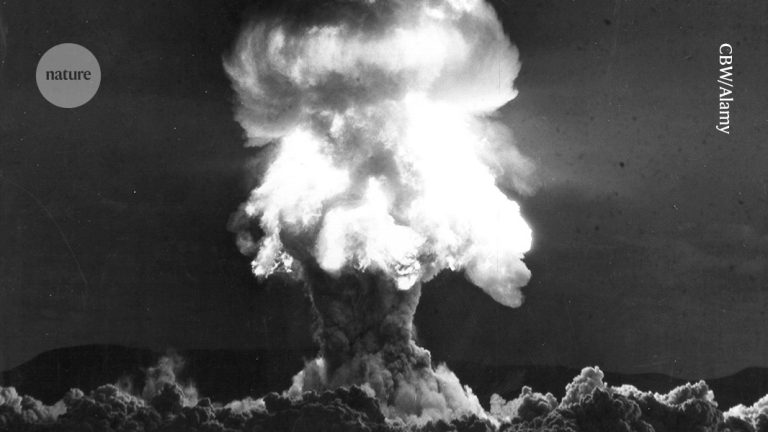Eighty Years of Nuclear Peril: A Renewed Call for Global Action
Eighty years ago, the world irrevocably changed. The Trinity test in the New Mexico desert ushered in the nuclear age, a period marked by both unparalleled destructive potential and the chilling specter of global annihilation. Just weeks after Trinity, the bombings of Hiroshima and Nagasaki provided a horrifying demonstration of this power, leaving hundreds of thousands dead and etching the devastating consequences of nuclear war into human consciousness. The decades that followed saw a precarious balance of power, with the United States and Soviet Union amassing vast nuclear arsenals in a high-stakes game of deterrence. Today, nine nations possess nuclear weapons and, alarmingly, the risk of their use is higher than it has been in decades.
This renewed sense of urgency was underscored at a recent assembly of nuclear security experts and Nobel laureates at the University of Chicago. The gathering served as a stark reminder that the threat of nuclear war transcends the mere existence of over 12,000 warheads and complex geopolitical rivalries. The emergence of transformative technologies like Artificial Intelligence (AI) and the corrosive spread of misinformation exacerbate existing tensions and destabilize the delicate equilibrium of nuclear deterrence. These insidious factors can amplify miscalculations and escalate conflicts, potentially triggering a devastating exchange. The scientific community must now elevate the discussion of these emerging threats and exert greater pressure on world leaders to implement effective preventative measures. Failure to act could result in the most catastrophic outcome imaginable: nuclear war.
The scientific community’s engagement with nuclear security has a long and storied history. A decade after the Trinity test, in the midst of escalating hydrogen bomb development, physicist Otto Hahn led a declaration at the annual meeting of Nobel laureates condemning the devastating potential of nuclear weapons. That same year, Albert Einstein and Bertrand Russell issued their now-famous manifesto, warning of the “universal death” that nuclear war could bring. This manifesto paved the way for the first Pugwash Conference in 1957, establishing a platform for ongoing dialogue and advocacy among scientists concerned about the nuclear threat.
The recent Nobel Laureate Assembly for the Prevention of Nuclear War in Chicago continues in this vital tradition. The participating scientists issued a declaration outlining concrete steps for nations to take to mitigate the risks of nuclear war. These include reaffirming commitments to ban nuclear testing, condemning nuclear proliferation, urging the US and Russia to negotiate a successor to the expiring New START treaty, and encouraging China to engage in transparent discussions about its expanding nuclear arsenal. The declaration underscores the pressing need for international cooperation and renewed efforts toward disarmament.
The current geopolitical landscape is rife with potential flashpoints, making the threat of nuclear conflict all too real. Russia’s invasion of Ukraine, North Korea’s continued development of its nuclear capabilities, and the attacks on Iran’s nuclear facilities have created a volatile and unpredictable environment. Compounding these dangers are the disruptive influences of AI and misinformation. In a recent example, during a brief but tense conflict between India and Pakistan, a torrent of fake news and manipulated images inundated social media in both countries, escalating anxieties and increasing the risk of miscalculation. Such incidents highlight how misinformation can blur the lines of conflict, fostering mistrust and increasing the likelihood of unintended escalation.
Further complicating the situation is the increasing integration of AI into military operations. While details remain largely classified, many nuclear-armed nations are likely incorporating AI into their nuclear command and control systems. While fears of handing launch codes to AI systems are perhaps overblown, the rapid decision-making capabilities of AI, coupled with the potential for algorithmic errors, magnify the risks of miscalculation in critical situations. Transparent discussions and international cooperation are essential to navigate the complex challenges posed by AI in the nuclear context. Researchers, policymakers, and government officials must engage in open dialogues through venues like the ongoing summits on responsible AI in the military to address these critical issues.
The Chicago declaration serves as a vital call to action, highlighting the evolving dangers of the nuclear age. Now, the onus is on the scientific community to translate these recommendations into concrete action. Scientists must leverage their expertise to influence political leaders and advocate for policies that minimize the risk of nuclear war. The future of humanity hinges on our collective ability to address these challenges and ensure that nuclear weapons are never used again.


